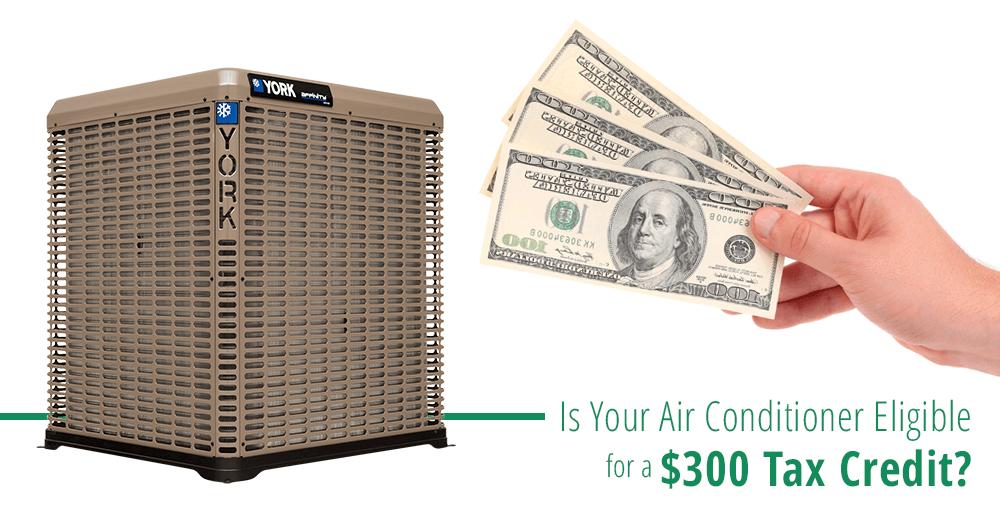
The incentive is capped at $500. The irs allows you to take the standard deduction.

You can claim a tax credit for 10% of the cost of qualified energy efficiency improvements and 100% of residential energy property costs.
Can energy efficient tax deductions for air conditioner. The incentive is capped at $500. There are no federal rebates for energy efficient purchases at this time. Depending on your circumstances, probably not.
Here�s how homeowners can claim tax credits for. If you have an air conditioning system in your home, you may be eligible for a federal tax credit. Seer>= 16 eer >= 13 package systems:
You can qualify for tax credit up to $300. For this credit, the irs distinguishes between two kinds of upgrades. Split systems must have a minimum of 16 seer and 13 eer whereas packaged systems must meet or exceed 14 seer and 12 eer.
However, the agency updates its website annually to reflect changes in credits and benefits, and posts a comprehensive list of provincial and territorial government agencies who do provide rebates to homeowners. This incentive is available for the following equipment types: Is there an energy tax credit for 2020?
Look for other fact sheets in this series that focus on investments in energy conservation and renewable energy. Can you write off a new hvac system on your taxes? You may be able to claim the residential energy credit if you made energy saving improvements to your us based home during the tax year.
10% of the amount paid or incurred for qualified energy efficiency improvements installed during 2020, and any residential energy property costs paid or incurred in 2020. Ac, heating, and ventilation certain products used for ac, ventilation, and heating will. In case you missed it, federal energy tax credits have been extended for the 2017 tax year.
Of that combined $500 limit, So making smart decisions about your home�s heating, ventilating, and air conditioning (hvac) system can have a big effect on your utility bills — and your comfort. If your home system meets the requirements, a tax credit consisting of 30 percent of the cost up to $1,500 is in order.
Rebates work differently than tax credits by getting cash back into your hands more quickly after you make a purchase. However, it has been extended through december 31, 2021, and retroactively back to january 1, 2017. Homeowners can deduct the cost of buying doors and windows, but not the cost of installing them.
However, this credit is limited as follows. The taxpayer certainty and disaster. If installed in the homeowner�s principal residence and placed in service between january 1, 2021 and december 31, 2021,the homeowner may qualify for a nonrefundable tax credit under section 25 of the irc up to $300 for expenditures made for the packaged unit, subject to an overall lifetime limitation of $500 for all prior taxable years ending.
Some home energy efficiency equipment purchases are eligible for state and federal tax credits in 2021. The extended tax credit is in effect for all qualifying systems and products installed during the 2012 through 2016 calendar years and expires on december 31, 2016. A total combined credit limit of $500 for all tax years after 2005.
Seer >= 14 eer >= 12 see definitions more information. A nonrefundable tax credit allows taxpayers to lower their tax liability to zero, but not below zero. They are required to have a minimum of 15 seer, 12.5 eer, 8.5 hspf.
When you choose to claim a tax credit, you do not have to itemize deductions. Meeting the requirements, though, is the condition of receiving this tax credit. However, many state governments, local governments, and utilities do offer rebates for energy efficient purchases.
Up to 10% of the cost to $500, or a specific amount from $50 to $300 You can claim a tax credit for 10% of the cost of qualified energy efficiency improvements and 100% of residential energy property costs. These also qualify for a $300 tax credit, but they must have a thermal efficiency of 75%, and they must meet epa standards under the 2020 clean air standards document.
Heating, ventilating, air conditioning (hvac) as much as half of the energy used in your home goes to heating and cooling. If you qualify for any of the federal hvac tax credits, then you may be eligible to receive credit on your next tax return by claiming the purchase on your taxes. Lennox® central air conditioners that achieve a minimum seer of 16.00 and eer of 13.00 and meet federal
The irs does not allow you to file a 1040ez form or 1040a form if you also want to claim energy efficiency tax credits. Central air conditioning you can qualify for tax credit up to $300. Equipment that qualifies for energy tax credits
The cra does not currently offer taxpayers any federal rebates for the purchase of energy efficient appliances. For qualified hvac improvements, homeowners may be able to claim 25c tax credits equal to 10 percent of the installed costs (up to $500 maximum*). Taxpayers in virginia may deduct from their taxable personal income an amount equal to 20% of the sales taxes paid for certain energy efficient equipment.
This credit is worth a maximum of $500 for all years combined, from 2006 to its expiration. The irs allows you to take the standard deduction. Advanced main air circulating fan
Energy saving improvements included for tax year 2021 are listed below: Air conditioners recognized as energy star most efficient meet the requirements for this tax credit.